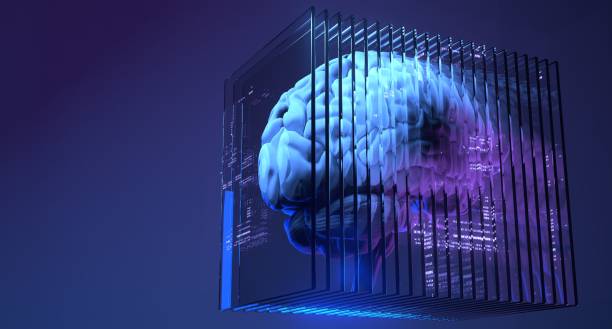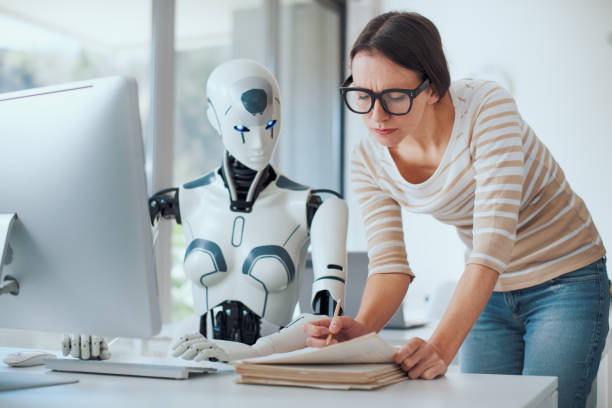1. Introduction
What Is The Turing Test?-In the captivating world of artificial intelligence (AI) and machine studying, the Turing Test emerges as an enormous milestone, showcasing the first rate development of machines in emulating human-like intelligence. This article will take you on a journey via the intricacies of the Turing Test, a creation of the amazing thoughts of Alan Turing, and discover its profound implications in the ultra-modern rapidly evolving technological landscape.
Contents In Page
Toggle2. The Genesis of the Turing Test

Alan Turing: A Visionary Thinker:
Alan Turing, a pioneering discern in pc technological know-how and AI, added the idea of the Turing Test in 1950 through his influential paper, "Computing Machinery and Intelligence." Driven with the aid of the interest to explore the limits of device intelligence, Turing predicted a test that could compare whether or not a gadget may want to engage in conversations indistinguishably from a human.
The Essence of the Turing Test:
At its centre, the Turing Test offers a deceptively easy premise: an evaluator engages in text-primarily based conversations with both a human and a gadget, without visual or auditory cues. If the evaluator cannot always differentiate between the two based totally on their responses, the machine is deemed to have handed the Turing Test. In essence, the gadget’s capability to emulate human-like cognitive methods turns into a yardstick for its intelligence.
3. The Implications of Passing the Turing Test

Defining True Artificial Intelligence:
Passing the Turing Test incorporates profound implications for the sphere of AI. It indicates a machine’s ability to not most effectively mimic human language however additionally to understand and respond in a manner that mirrors human knowledge. This achievement serves as a stepping stone towards achieving real artificial intelligence, as it requires the machine to navigate the nuances of human communique.
Philosophical and Ethical Considerations:
Beyond its technological significance, the Turing Test delves into philosophical realms. It activates us to contemplate the nature of focus, self-consciousness, and real knowledge. The potential of a device to duplicate human-like conversation increases moral questions about the responsibilities of AI creators if machines can convincingly simulate human idea procedures.
4. Beyond the Turing Test: Advancements in AI

Machine Learning and Natural Language Processing:
Since Alan Turing’s groundbreaking work, AI has gone through exquisite modifications. Machine mastering algorithms and natural language processing techniques have enabled the introduction of sophisticated chatbots, virtual assistants, and language fashions. These AI entities can generate coherent and contextually relevant responses, making interactions with them more and more seamless.
Limitations and Criticisms:
While the Turing Test set the stage for AI improvement, it is not without its critics. Some argue that the test’s attention on verbal exchange would not embody the whole spectrum of intelligence. AI structures passing the check may rely on patterns and predefined responses as opposed to real knowledge.
5. Contemporary Applications

Chatbots and Customer Service:
In the prevailing generation, chatbots have ended up a ubiquitous presence, particularly in customer support. Leveraging herbal language processing, those AI-powered entities offer immediate assistance, answer queries, and offer answers, all at the same time as striving to emulate human verbal exchange.
Personal Assistants and Smart Devices:
Virtual private assistants like Siri, Google Assistant, and Alexa epitomise the evolution of AI since the Turing Test’s inception. They recognize voice commands, execute obligations, and have interaction with customers in dialogue, seamlessly integrating into daily exercises.
6. The Road Ahead
As the field of AI keeps to boost, the Turing Test stays a milestone, but no longer the very last vacation spot. Researchers are pushing the limits, aiming to create AI structures that go beyond mere verbal exchange and show off creativity, trouble-solving skills, and a deeper know-how of human context.
Conclusion
In the grand tapestry of AI’s evolution, the Turing Test stands as a pivotal thread. Conceived by way of Alan Turing, this check has ignited debates, spurred innovation, and raised profound questions on the nature of machine intelligence and human attention. As era hurdles ahead, the Turing Test will probably preserve our exploration of AI’s ability.
FAQs
1. What is the Turing Test?
The Turing Test is a concept brought through Alan Turing to determine a machine’s ability to show off human-like intelligence in conversations.
2. Why is the Turing Test good sized?
The Turing Test is substantial because it raises questions on device intelligence, awareness, and the capabilities of AI structures.
3. Can passing the Turing Test guarantee authentic AI?
While passing the Turing Test is a milestone, it would not assure genuine AI. It measures conversational potential however no longer necessarily requires expertise.
4. How has the Turing Test stimulated AI improvement?
The Turing Test has stimulated the development of AI systems like chatbots, virtual assistants, and language fashions, shaping the way we interact with generation.